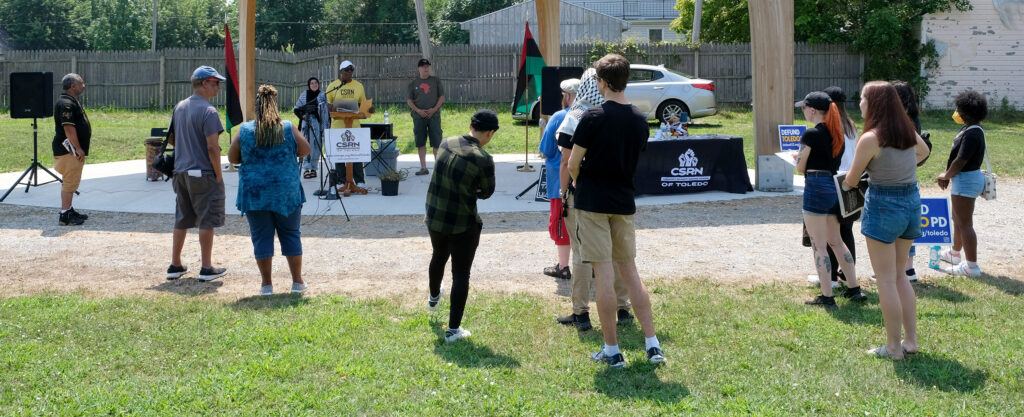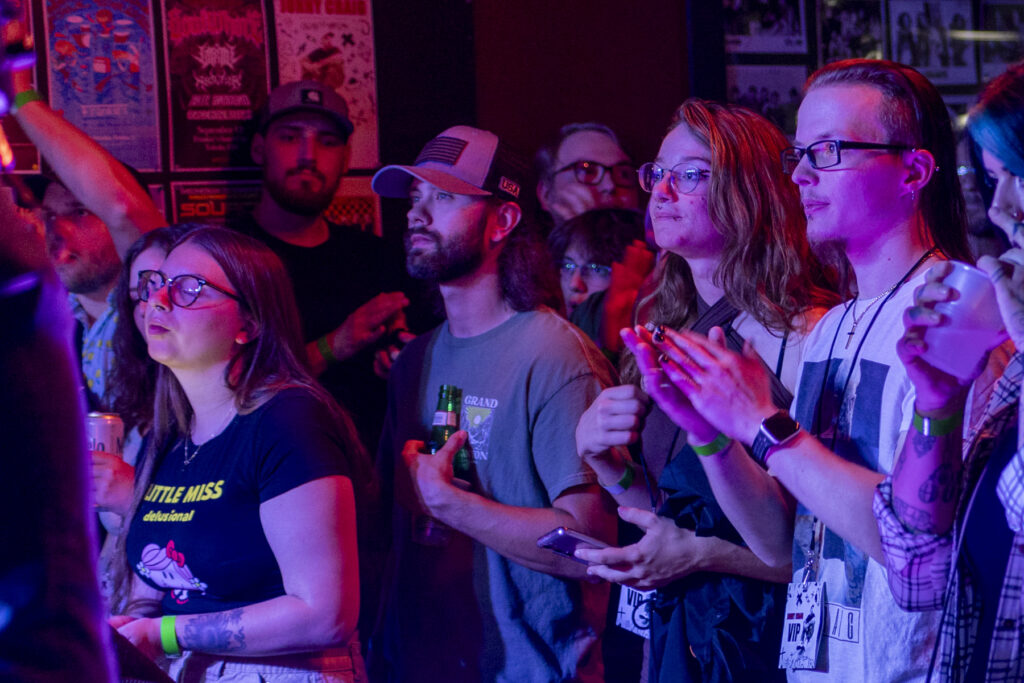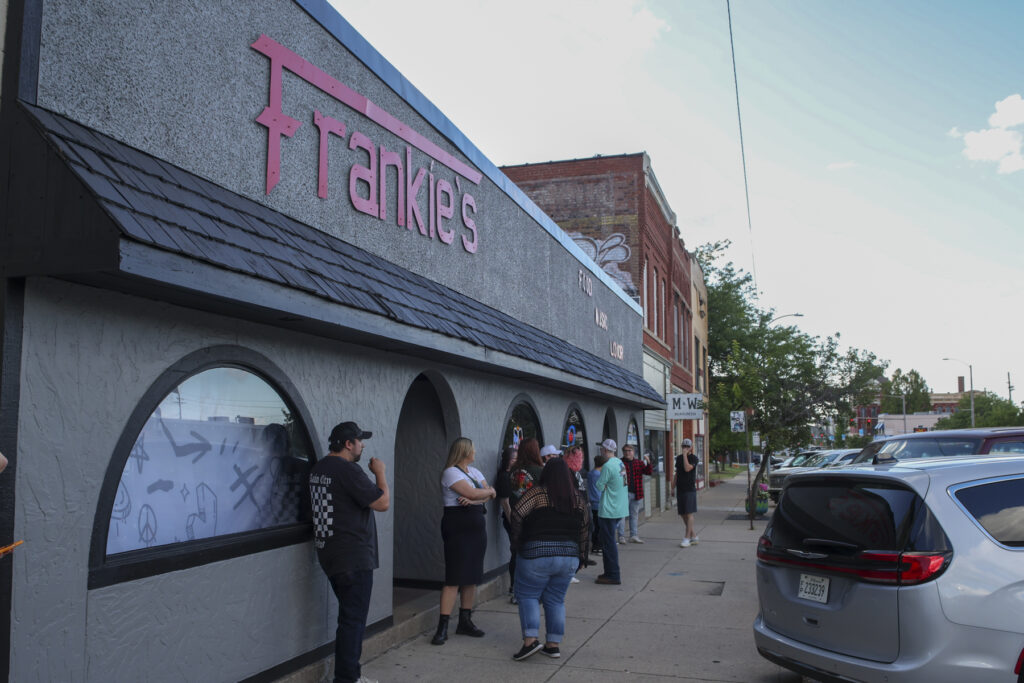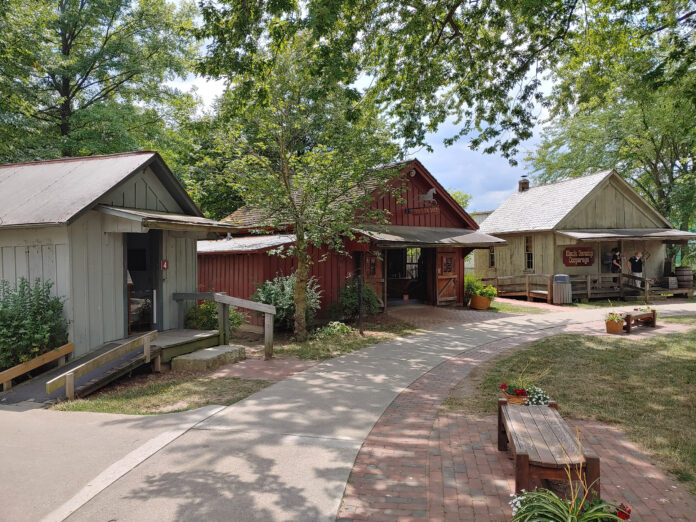Is Toledo a sacrifice zone?
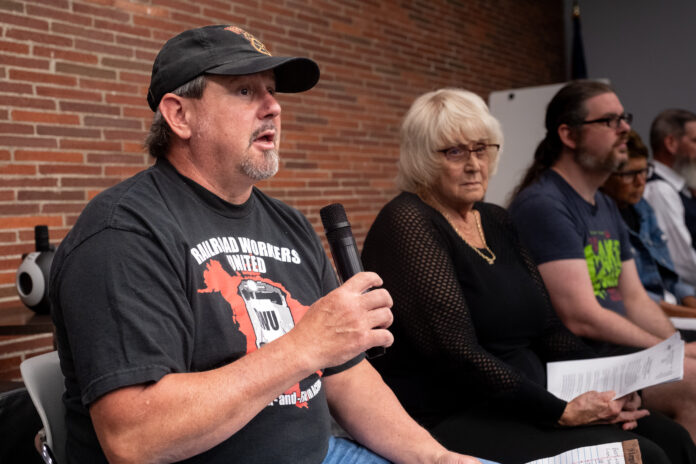

Conference on Corporate Caused Disasters targets unsafe water, train derailment
TOLEDO – It’s an anniversary few Toledoans will ever forget.
August 2, 2014: The day Toledoans woke up to warnings not to drink, bathe or cook with municipal drinking water. It was the day Toledoans came to understand just how devastating blue-green algal blooms in Lake Erie could be when toxic cyanobacteria contaminated the water supply for 400,000 human beings.
The algal bloom and undrinkable city water made national news—and not in a good way, either.
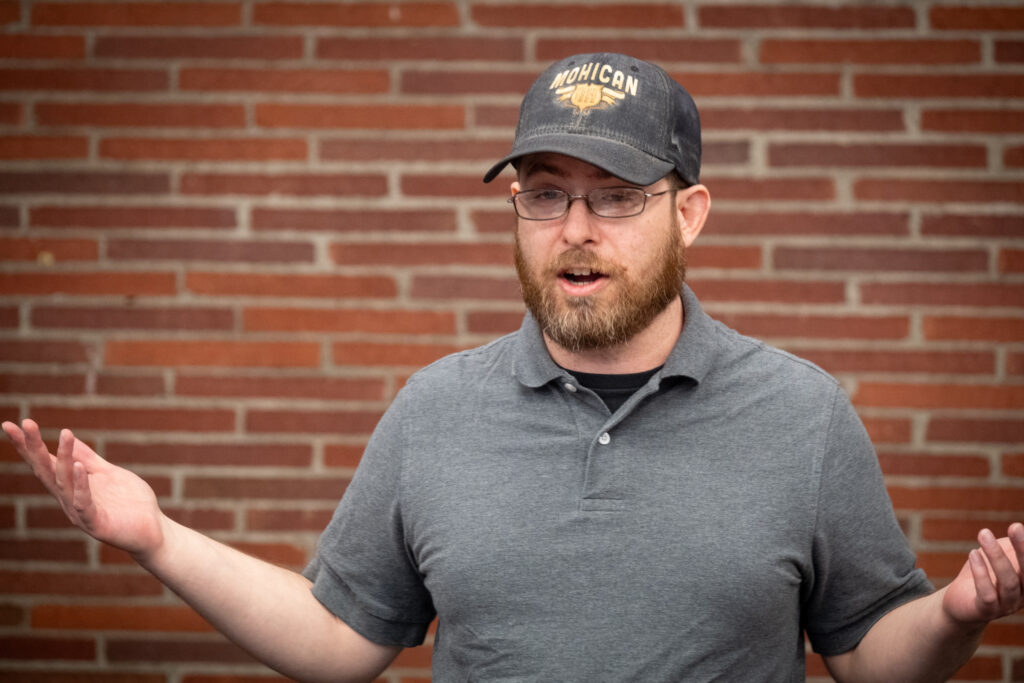
Ten years after the three-day water crisis, Mike Balonek, a Toledo filmmaker, crafted a short documentary about the challenges of blue-green algal blooms that still face the region. His film, The Big Problem in the Great Lakes, which premiered Aug. 3 at the Kent Branch Library, was part of the Conference on Corporate Caused Disasters, which he helped organize.
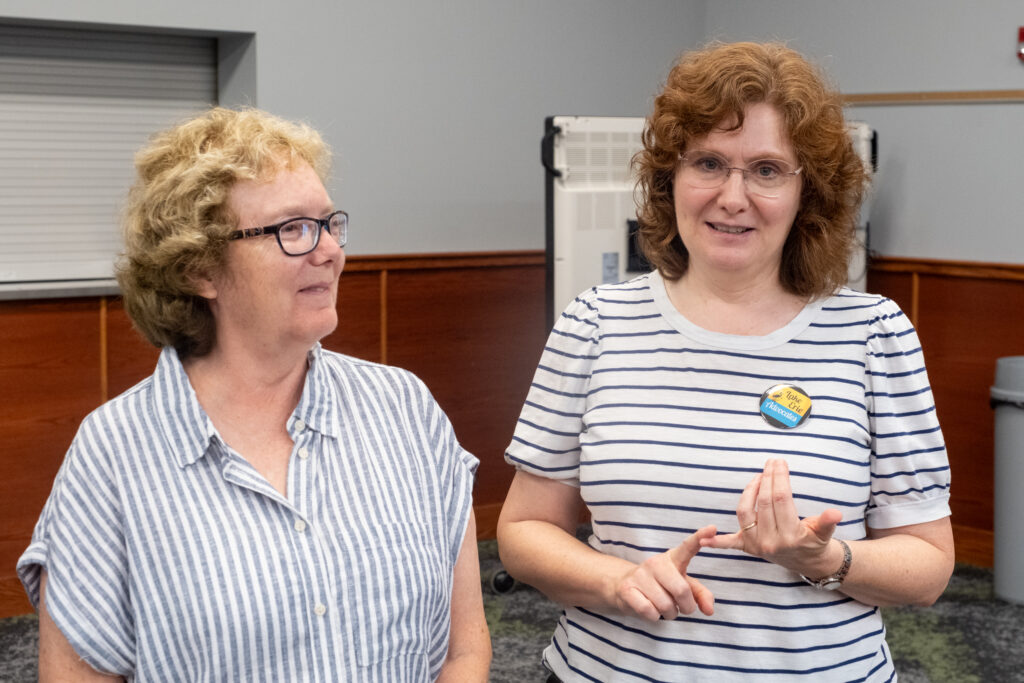

Balonek claimed he was never an organizer, but a filmmaker. The train derailment and burning of toxic chemicals in East Palestine, Ohio, last year motivated him to bring people from many different backgrounds together to discuss what they have in common.
“Everyone felt that now is a good time to start a movement, a movement where everyday people work together to protect themselves from the environmental harms that their local, state, or federal government won’t,” he said.
“If you live here (Toledo), you live in a sacrifice zone,” said Balonek. A sacrifice zone is defined as any area where you and your family’s health and safety are being sacrificed for corporate profits.
The documentary shows that there is little actual enforcement of environmental regulations when it comes to factory farms or Concentrated Animal Feed Operations (CAFOs). These factory farms, with thousands of beef cattle, dairy cows, pigs and chickens contained in relatively small areas, produce huge amounts of manure used as fertilizer on fields, causing massive run-offs of excess manure into local streams and rivers. Eventually all the phosphorus and nitrogen winds up in Lake Erie where an overabundance of these nutrients can cause large blue-green algal blooms.
There is little interest coming from the federal government about how these algal blooms can poison the drinking water for upwards of 11 million people living along the shores of Lake Erie in both the U.S. and Canada. Their attitude is that the people of the Great Lakes can take care of themselves.
Toledo mayor Wade Kapszukiewicz, interviewed in the documentary about the 2014 water crisis, said, “A single CAFO shouldn’t be approved going forward, but they’ve approved 50 new ones since then. The state continues to look the other way. The state uses Lake Erie as a toilet.”
There’s a lack of enforcement.
Sandusky County farmer Tony Ruffing
And with farmland selling for approximately $10,000 an acre in NW Ohio, according to Ruffing, more and more corporations/billionaires are buying it up. Small farmers who practice environmentally friendly farming cannot hope to compete unless laws and regulations are changed in their favor.
After the film showing, a panel of activists from Lake Erie Advocates (LEA), Toledoans for Safe Water, East Palestine and Piketon, Ohio, and San Francisco (via Zoom) gave testimony about the corporations that have caused environmental disasters in their areas, and how the people are fighting hard for recompensation and needed remediation of the toxins in their air, land and water. This includes the many decades-long fight for the removal of radioactive nuclear wastes left over from government projects in Piketon, Ohio and San Francisco.
It’s an uphill battle.
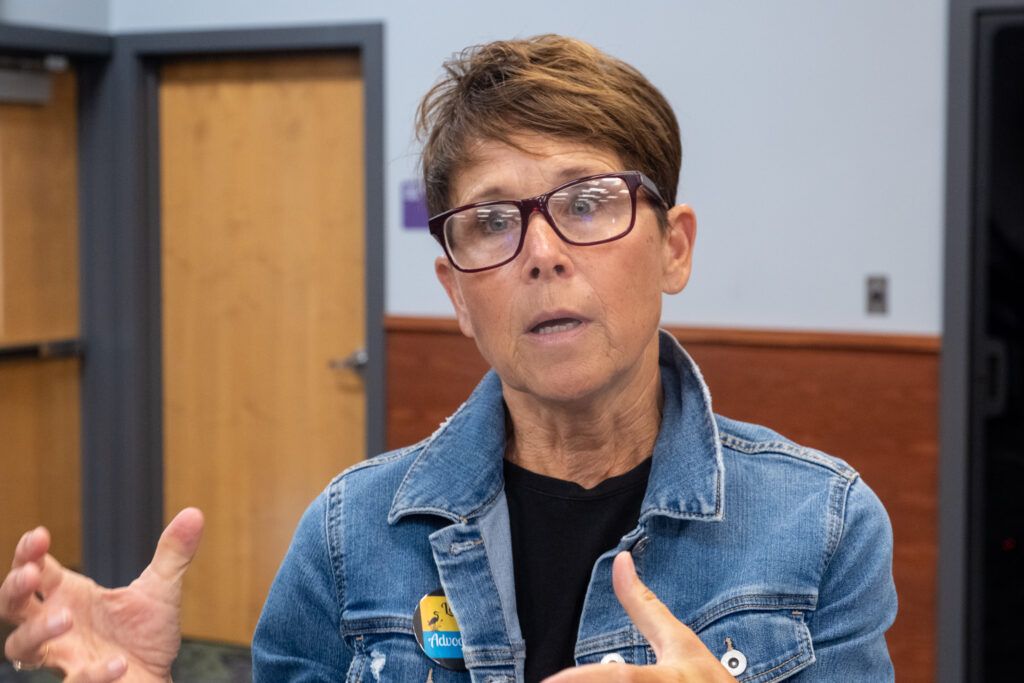

“CAFOs are not a sustainable industry,” LEA activist Kim Axe noted. The federal and state governments subsidize them to produce excess products such as milk, that sometimes later cannot be sold. The state of Ohio even pays farmers $60 an acre to spread the plentiful CAFO manure onto fields, but it doesn’t monitor how much is being used, leading to the excessive nutrient run-offs into the lake which causes the toxic algal blooms.
Most of the activists stressed how corporations and their lobbyists have tremendous influence over politicians and government agencies. Regulatory capture is real.
The Environmental Protection Agency (EPA) provides permits to corporations stating how much pollution they are allowed to dump into the environment and doesn’t always monitor what’s happening. The panelists felt that governments at all levels are abdicating protecting the public’s health and safety.
But there is unity in the community. Ohioans can come together and fight back against this corrupt system.
“Why is clean, safe drinking water controversial?” asked Toledo activist Sean Nestor. “Who could be opposed to clean water?”
“The voice of the people is muffled by the corporations,” added Matt Weaver, a Railroad Workers Union member who noted a pattern. “Regulations interfere with profits, the quest for shareholder happiness. You can’t trust an industry to self-regulate.”
Each of the panelists gave examples of how corporate farmers, railroad corporations and the nuclear industry have failed to self-regulate, and offered suggestions on what the public can do about it.
“Let the people know what’s happening,” said Chris Albright, a resident of East Palestine. Albright has suffered serious health issues caused by the toxins released into the air from the unnecessary burning of chemicals leaked from train cars after the derailment in February 2023.
The Stafford Act — a federal act that could designate East Palestine a disaster zone and give residents much needed health care and compensation for their homes lost to the pollutants— has yet to be signed by President Biden. Albright lost his job due to his health issues, as well as his good private health insurance. He worries about his children’s health.
It’s going to keep happening. It’s not if but when. They contaminated our town for profit … and our government doesn’t want to pay.
Chris Albright
The government hasn’t provided Stafford Act health care and compensation to the people of Toledo or Piketon, either. But Ohioans are working together to find out what risks there are to our health caused by blue-green algal blooms.
The University of Toledo, along with the Great Lakes Center for Fresh Waters and Human Health, are conducting a study into the effects of cyanobacteria aerosols that people who live, work or recreate near or on Lake Erie in Lucas, Sandusky, or Ottawa counties might have experienced. The film noted that aerosols have proven to be an even greater risk to the public’s health than simply ingesting water or sand that has become contaminated with blue-green algae.
The “GLAMR Study” (Great Lakes Aerosol Monitoring Research Study) needs participants. Call 419-383-6761 or email jennifer.gilmore@utoledo.edu for more information.
Full Disclosure: Sean Nestor is a board member of the Toledo Free Press.
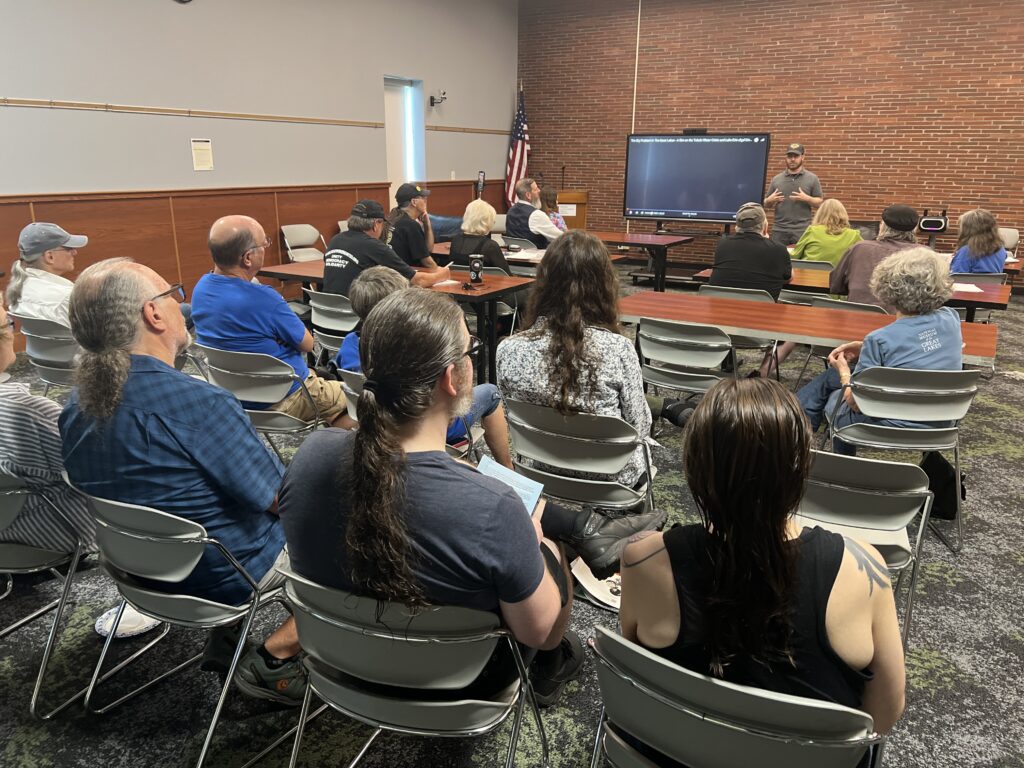

Adult cannabis use now legal
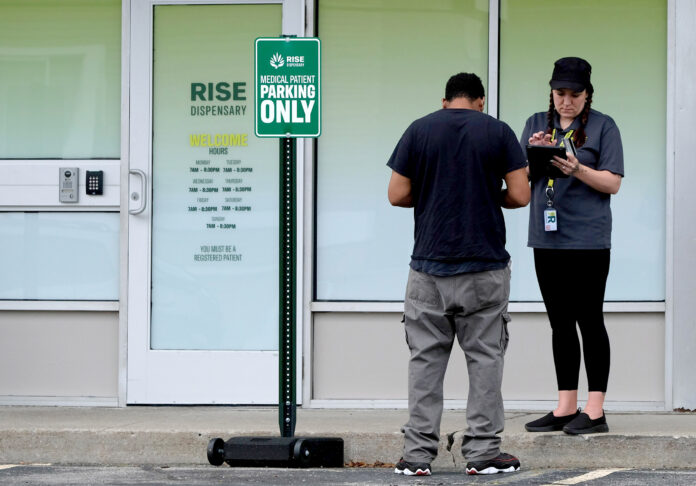

Ohio leads revolution against federal prohibition
TOLEDO – Ohio begins recreational marijuana sales today, marking a significant shift in the state’s cannabis landscape following last November’s voter approval for adult-use cannabis. Dispensaries statewide are set to serve recreational consumers, including right here in Toledo and Bowling Green.
One of the dispensaries, Nectar Dispensary in Bowling Green, has spent the past two months preparing for this day by hiring and training staff and stocking up on a very extensive menu and back stock, according to Zachary Gergich, the store’s designated representative.
Gergich said he is expecting a big rush because “a lot of people are excited and have been waiting for this day, especially since it’s been almost 10 months since we we’re able to vote on it. People have been waiting for a while, and I definitely think there’s going to be a big push tomorrow.
“We’re making history … it’s going to be the first day of sales in Ohio for recreational customers I think a lot of people want to be part of history,” he said.
Nectar, which has been open for medical cannabis since March 2023 and receives its product from Ohio, currently has three Nectar stores in Ohio and three more on the way.
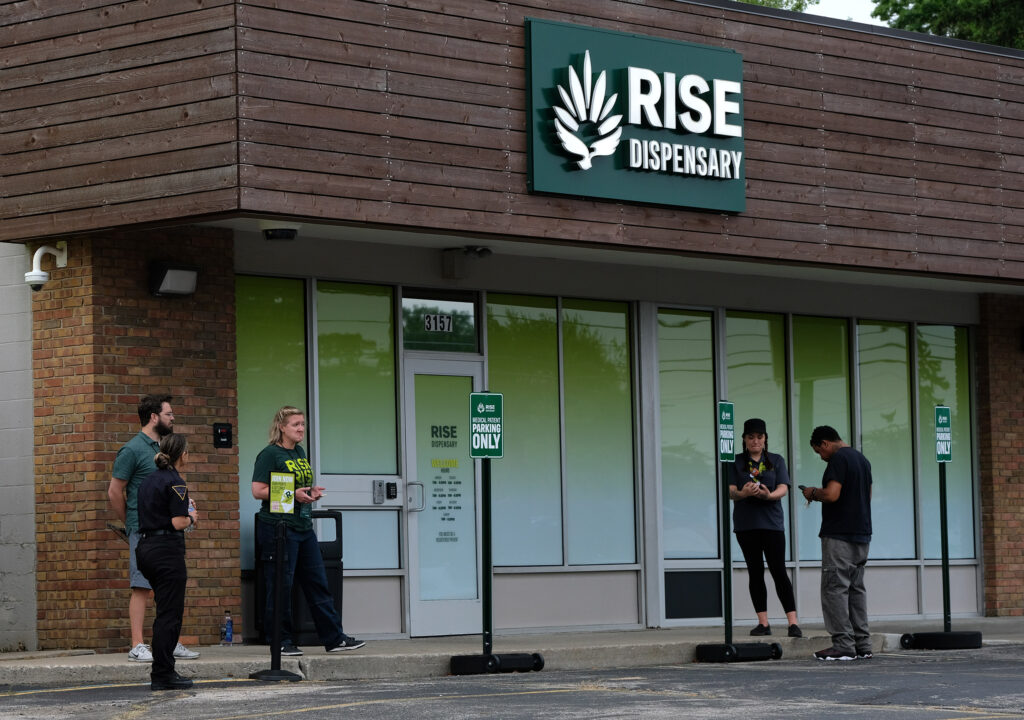

The legalization of cannabis in the United States represents a unique and historical chapter in human history. Unlike any previous prohibition, the shift from illegal to legal status for cannabis is characterized by a gradual, state-by-state approach rather than a sweeping federal mandate. This piecemeal legalization has allowed the U.S. to become a leader in cannabis innovation, positioning itself for global dominance in the burgeoning market.
The federal government’s decision to let states act as laboratories of democracy has fostered diverse legal and business models, driving significant advancements in cultivation, distribution and regulation.
According to Lenny Berry, founder and CEO of the Ohio Cannabis Health and Business Summit, “this is an historic mark for everybody who’s been fighting to legalize it and destigmatize the plant for patients who use it and have been shunned.


“I also think it gives consumers or people who were curious about the plant an opportunity to venture into the space or inquire about it without feeling a certain kind of way or needing a medical card,” he said.
“I just felt like there was a lot of misinformation while we were trying to pass legalization, and I always feel like the educated person is the best voter, because if you don’t know about the industry, you’ll feel apprehensive about putting your best foot forward to try to make it happen,” he explained.
“It’s a great way to celebrate being the 24th legal state, for us to hit that milestone and get across the finish line, especially when you’re talking about Ohio businesses losing to Michigan,” Berry said. “That was a big thing. The prices may not be as low as Michigan but I think now that we have a legal market, we will keep a lot of consumers here in the state, like tax dollars, job creation, and the list goes on.
In the grand scheme of things, I think the Ohio economy is going to get a major shot in the arm.
Lenny Berry,
Ohio, the 24th state to sell recreational cannabis, is part of a growing revolt against federal cannabis prohibition, joining other states in challenging outdated federal restrictions by establishing its own cannabis policies. This state-led movement underscores a broader shift towards recognizing cannabis as a legitimate economic and social asset. By legalizing cannabis, Ohio asserts its right to innovate and lead in this rapidly evolving industry, setting an example for other states to follow.
The new law allows adults to buy and possess up to 2.5 ounces (70 grams) of cannabis and to grow up to six plants per individual or 12 plants per household at home.
Cannabis is uniquely positioned as a product with both recreational and therapeutic applications, setting it apart from other substances. While alcohol commands a $1.6 trillion annual market, cannabis also taps into the pharmaceutical sector, particularly in areas like anti-inflammatory treatments.
The global market for anti-inflammatory drugs is substantial, valued at approximately $104 billion in 2022 and projected to grow significantly. Cannabis’s potential impact on these markets, though not entirely replacing them, could alter consumer choices and industry dynamics.
Ohio’s entry into the recreational cannabis market impacts local and regional economies, particularly border cities like Toledo and Detroit. Michigan has benefited significantly from Ohioans purchasing cannabis across state lines. According to New Frontier Data, Michigan’s cannabis sales reached over $3 billion in 2023, a 30 percent increase from 2022. However, the precise contribution of Ohioans to Michigan’s sales remains unclear.
Ohio’s legalization may also influence neighboring states like Kentucky, Indiana, Pennsylvania and West Virginia by encouraging policy changes and affecting local economies as residents travel to Ohio for cannabis purchases.


The legalization of recreational cannabis in Ohio could alter the flow of cannabis and related money across state lines. Ohioans who previously traveled to Michigan for cannabis may now spend locally, impacting Michigan’s sales and Ohio’s economic landscape. Additionally, changes in consumer behavior could influence the flow of cannabis-related money, as Ohio retains more revenue within its borders. This shift might prompt neighboring states to reconsider their cannabis policies to prevent economic losses.
Ohio’s medical cannabis sales in 2023 were $484.4 million, a slight one percent increase from 2022. The market faces challenges, including a decline in registered medical marijuana patients by nearly 8 percent since the November 2023 election. Ohioans spent over $700 million on cannabis in Michigan in 2023 due to lower prices and quality concerns in Ohio’s market. The anticipation of today’s recreational sales launch may also have affected the medical market.
New Frontier data forecasts Ohio’s marijuana sales to potentially hit $2.8 billion by 2030.
Ohio’s legalization of recreational marijuana sales marks a new era of economic opportunity and political discourse. By fostering a competitive environment and learning from states like Michigan, Ohio can position itself as a leader in the cannabis industry. With projections indicating significant growth, Ohio’s market dynamics and strategic policies will shape the future of cannabis legalization in the region and beyond.
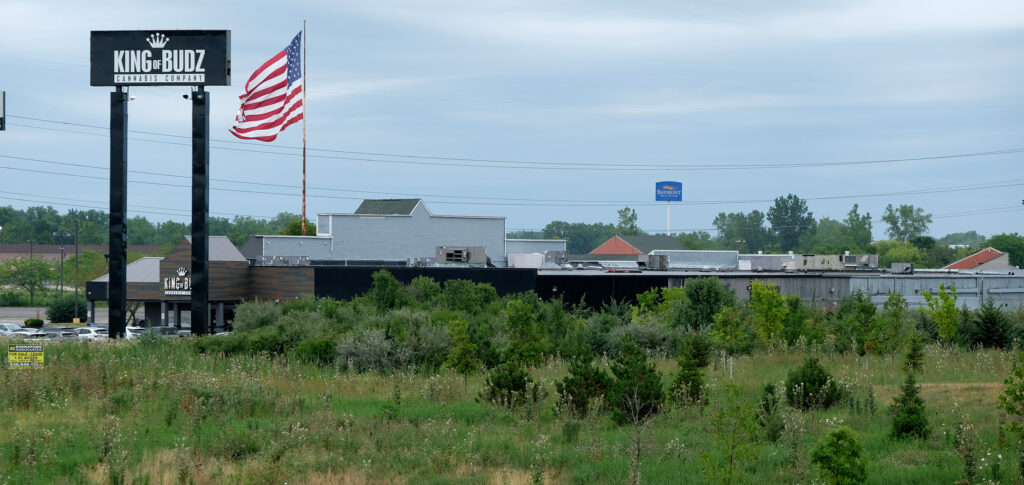

Daily Dose | The Humorist
Recreational cannabis now legal in Ohio
Museums for All in Toledo
Museum accessibility breaks income barriers for Toledoans
TOLEDO – If you can get a child interested in going to museums at a young age, you might just be instilling a habit that continually opens their worldview for the rest of their life. For some families on a tight budget, that doesn’t always seem like a viable option because of the cost of admission at many institutions. That’s where the Museums for All program comes in.
An initiative of the Institute of Museum and Library Services, Museums for All launched in 2014 to promote museum accessibility for food-insecure households. Officially, this means that households who receive SNAP benefits can present their EBT card and gain admission with a maximum of $3 per person, but most places will also accept a WIC card. It is a nationwide program that can be used across state lines.
There are five museums in the Toledo area who proudly participate in the program, and you can search for others through the Museums for All database. We did some digging about our local institutions, all of which accept both SNAP and WIC, to help Toledoans enjoy the savings. Visitors must bring one of these cards to receive the discount.
Visit Ohio’s War of 1812 battlefield, fort, and museum. Both self-guided and guided tours are enhanced by historic figures dressed in period clothing who all hold a wealth of knowledge about the site.
General admission regular price is $12 for adults, $10 for seniors, $7 for students, and free for kids aged five and under.
Museums for All discount: $1 for adults and free for those 18 and under. Must present Either WIC or SNAP cards are accepted to receive the discount.
National Museum of the Great Lakes
Marvel at the rich history of the Great Lakes region with a trip to this national museum. It features a fascinating documentary to begin your journey, followed by exhibits that explore everything from cruise ships to maritime technology. There are also many interactive exhibits for kids of all ages.
General museum admission regular price is $11 for adults; $10 for seniors, military and first responders; $8 for children aged 6-17; and free for kids aged five and under.
Regular price for those visiting the museum and touring the Schoonmaker and Ohio vessels: $17 for adults; $16 for seniors, military, and first responders; $14 for children aged 6-17; and free for kids aged five and under.
Museums for All discount: If touring only the museum, admission is free for all ages. If touring the museum and boats, visitors aged six and older pay $3 each.
Per their website, “Imagination Station believes that science is for everyone, and Museums for All is focused on removing financial barriers.” Regardless of income, all Lucas County children are admitted for free on Saturdays, so you can save even more money that day!
General admission regular price for Lucas county residents is $15 per adult, $14 for seniors, and $13 for children three and older. Kids under two are free. Non-residents of Lucas County pay $2 more for regular admission.
Museums for All discount: $3 each for up to eight visitors.
The Fulton County Historical Society oversees the museum that highlights the stories of Fulton County residents throughout the years that have shaped our region’s history. There are also special rotating exhibits and interactive features for all ages.
The regular price for general admission is $8 for visitors aged 16 and older, $7 for seniors, $3 for children aged 6-15, and free for those aged six and under. Also free for military and veterans.
Museums for All discount: $1 per visitor.
Step back in time at Sauder Village, where visitors can immerse themselves in the life of early 1800s settlers and Indigenous peoples to life on 1920s Main Street that features an old-timey soda shop and speakeasy with a secret entrance (Psst: it’s in the candy shop).
The regular price for general admission is $25 for adults, $23 for seniors, $19 for students aged 4-16, and free for kids aged three and under.
Museums for All discount: $3 per person up to 6 people.
These options are an easy drive from Toledo if you’re in an adventurous mood:
- Henry Ford and Greenfield Village
- Ford Rouge Factory Tour
- Arab American National Museum
- Outdoor Adventure Center
- Belle isle aquarium
- Museum of Contemporary Art Detroit (MOCAD)
- Michigan Science Center
- Ford Piquette Avenue Plant
- University of Michigan Museum of Art
Community vigil for Massey


Activists inspire citizens to take a stand, call out police violence and injustice
TOLEDO – As half a dozen people lingered around a table littered with protest buttons, event flyers and The Final Call newspapers, Brother Washington Muhammad took the opportunity to announce what was going to be discussed during a community vigil for Sonya Massey, a black woman shot in the face by a white police officer in her Illinois home last month.
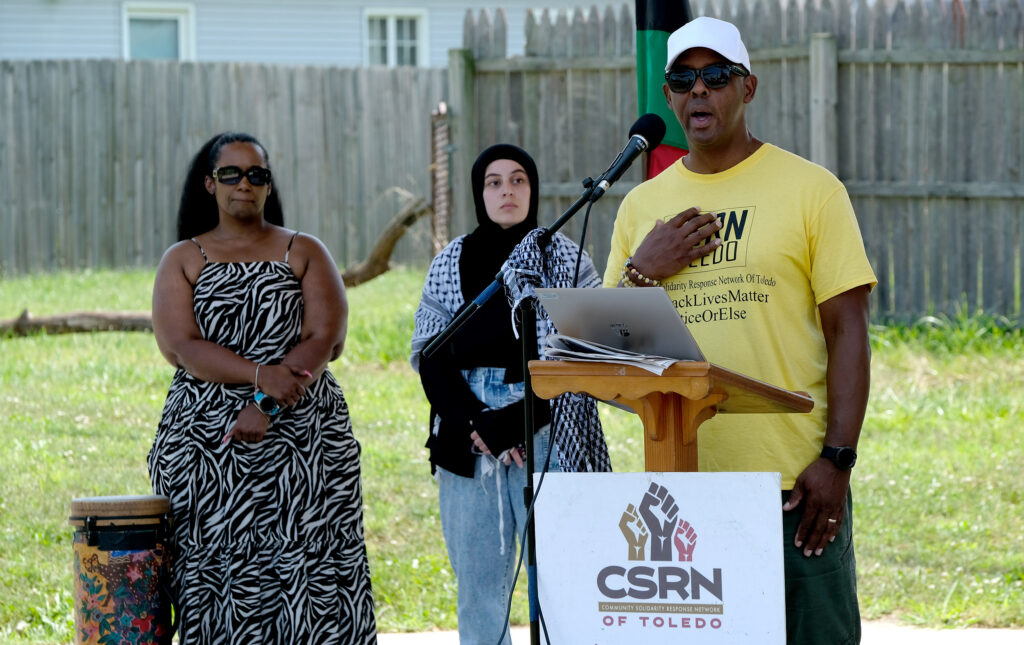

“The things we are going to say today aren’t normally said. We get criticized for speaking about the police. We get criticized for speaking about the rights of the Palestinians and for talking about anything folks believe we should shut up about,” he told them.
“And we get criticized when we talk about our children that have been murdered. This is not the place where we’re going to minimize our words or our spirit, alright? If we wanted to do that, we would just watch CNN and be done with it. So, that’s the spirit we’re going with today, with love, and that’s why I pulled all of you here.”
While Muhammad, co-founder of the Community Solidarity Response Network of Toledo (CSRNT), held their attention, Khadijah Cunningham stood nearby and lit a single white candle to symbolize hope and healing.
When asked why she came to the event, Cunningham said she was “a black person in America who is not happy with my people being slaughtered.”
The community vigil not only memorialized Massey but was intended for citizens to take a stand, rise up and call out police violence and injustice within the community, explained Muhammad. Speakers represented the American Muslims for Palestine, the Northwest Chapter of Parents of Murdered Children, the New Order Human Rights Organization, and the Media Decompression Collective (MDC).
Muhammad began the vigil with a collective chant: “It is our duty to fight for our freedom. It is our duty to win. We must love each other and protect each other. We have nothing to lose but our chains.”
He went on to say that not only are they memorializing Massey, but there are also international aspects of the fight for freedom and revolutionaries, specifically of what’s happening in Gaza, which is a “thumbnail of what’s going to happen to us here, so if we’re silent on Gaza then they will expect us to be silent here.”
Wearing a shirt with the country of Africa imprinted on the front and a baseball hat supporting Palestine, speaker Amjad Doumani, founder of MDC, said he was honored and proud to stand amongst his brothers and sisters behind him and in front of him because all of their struggles, be they here in Toledo, throughout this country or throughout the world.
“There’s a common struggle, a class struggle, where people need to throw off the shackles of colonialism and imperialism and how it oppresses us everywhere,” he said to about 20 people who showed up to listen, support each other and vent.
“Israel is about to attack Palestinian areas and bomb them to death. They dropped leaflets telling the Palestinians ‘we’re concerned about you so we want you to move from this section to this section and over there.’ But what ends up happening is they bombed them where they moved to, so they lied to them just the way the police are lying to us here,” Kanaan said.


“Our struggles are interconnected, and we all live with the generational trauma of our ancestors, you know,” added Walaa Kanan, American Muslims for Palestine Toledo chapter board member.
“There is not anything you don’t know enough about – we can continue to uplift one another by educating ourselves, becoming more articulate, learning those talking points, but we have to start somewhere. We can’t start if we continue to gaslight ourselves because that is what they want you to feel – powerless,” she said.
The greatest way of giving up your power is just recognizing that you don’t have it,” Kanan continued. “So, while I find myself sitting in really deep grief at this time, I also find myself deeply optimistic because I think this is the generation that is going to make a difference because we have learned to stop listening to those in power.
“I urge you to wake up tomorrow and realize the power you have and connect with other community members and help us in this fight to make a difference.”
Another speaker who stepped up to the mic was Siti Dotson-Chambers, of the New Order National Human Rights org. She didn’t mince words.
“Today, I just stand and ask that you continue to fight the fight. When we have these rallies and we come out, continue to bring other people with you. I mean, it’s no reason this place shouldn’t be surrounded right now with all of the stuff that’s going on right here in Toledo.
Siti Dotson-Chambers
“When you can have an officer calling a woman a fat wench, which is a derogatory term, and nothing really happens – a slap on the wrist. So, first I called you a fat wench; then I stopped you and give you a ticket for walking in the street; then I let my dog bite you. I shoot you with rubber bullets when you peacefully, peacefully decided to speak out, and then I kill you,” she said, making her point.
“When we call them for help, even though they have a CIT department, they still shoot and kill those with mental health, so today we stand in solidarity with each other because you don’t have to look like me to stand up. We need to come together in the city of Toledo, although it’s happening nationwide … but we don’t want it to happen here,” said Dotson-Chambers.
In a press release for the event posted on their Facebook page, Muhammad wrote that CSRN intends to search for answers and ask the difficult questions regarding local law enforcement.
